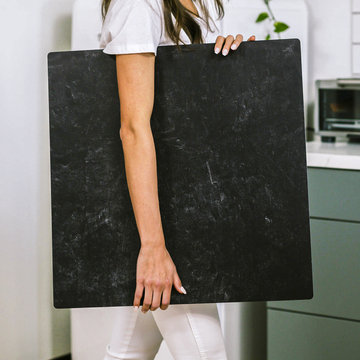Ever walk away from a photoshoot thinking, "Something just doesn't feel right," even when your lighting and products are perfect? You might be overlooking one of the most underrated players in photography: your backdrop. At first glance, it seems like a simple rectangle behind your scene, but in reality, the right surface can transform your images in ways you never imagined.
We’re not just talking about picking a color that “goes” with your brand. The texture, finish, and even microscopic qualities of a backdrop can make or break the way your product appears, how easy it is to edit, and the connection you build with your audience. If you want photos with that coveted professional polish, it’s time to dive deeper.
More Than Just a Background: Backdrops as Passive Light Shapers
Let’s go beyond the basics. Every backdrop interacts with light in its own way, and it’s the surface texture-and not just the color-that does most of the work. This determines if you end up with blown-out highlights, muddy shadows, or soft, seamless gradients that make your products pop.
- Glossy surfaces: Invite sharp reflections, hotspots, and sometimes, distracting color casts-problems you can end up fighting in post-production.
- Matte, micro-textured surfaces: Scatter light diffusely, creating gentle transitions and helping you control glare.
- Organically textured backdrops: Add depth, character, and natural light breakup, giving your photos a lifelike atmosphere.
Replica Surfaces and similar brands engineer their backdrops with special coatings and surface patterns, specifically to help photographers avoid the pitfalls of generic options. By choosing these, you equip your workspace with powerful, passive light control tools right from the start.
The Unsung Editing Advantage
Ever tried color-correcting a product photo, only to watch your background turn weirdly blue or red? Surfaces that aren't color-neutral or that have odd reflective properties can sabotage your editing workflow. On the other hand, pro-grade surfaces:
- Reduce unwanted color casts, keeping your products true-to-life
- Minimize pattern repetition, which is crucial when retouching or cloning out stray props
- Provide subtle texture that helps mask dust and imperfections, saving you time in post
This means less time fighting with edits, and more time sharing your story with your customers.
Backdrops That Shape Your Scene
Flat lays are just the beginning. Modern photography boards, such as those from Replica, are built to connect at various angles, instantly creating professional-looking corners and seamless transitions between “floor” and “wall.”
- Multi-panel setups add depth and realism, pulling the viewer’s eye straight to your product
- Variation in micro-texture can create gentle light gradients, helping even the simplest setup look editorial
- You can swap panels to match seasonal collections, product launches, or just to keep things fresh on your feed
This flexibility turns every photoshoot into an opportunity to elevate your brand look-no studio required.
The Psychology of Texture: Building Trust Through Realism
There’s a reason fake-looking photos (think: ultra-smooth, plastic backdrops) can feel “off” to your customers. Subconsciously, we pick up on minute texture and shadow cues-details that tell us an image is real and trustworthy.
Microscopically textured backdrops interact with light in ways that replicate nature. Your viewers might not notice it outright, but they will feel the authenticity. That extra hint of realism can make all the difference in a world of too-perfect, AI-generated images.
Choosing a Backdrop: Key Takeaways
- Treat your backdrop as a tool, not just a prop. The right surface can act as a passive diffuser, color corrector, and trust builder-all at once.
- Invest in quality materials. It might cost more upfront, but you’ll save hours in editing and get more consistent results.
- Experiment with angles and setups. Two-panel kits or modular systems unlock a world of creative options in even the smallest home studio.
If you’re looking to up your product photography game, don’t just look at what’s in front of your camera-take a hard look at what’s behind it. The secret to unforgettable images might be as simple as switching up your surface. Ready to see the difference for yourself?



